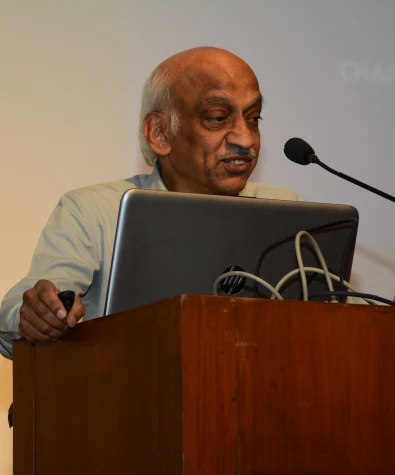Dr. H. N. Sethna Memorial Lecture 2017
The 7th Dr H. N. Sethna Memorial Lecture was delivered on September 2, 2017, by Shri. A. S. Kiran Kumar, Chairman, Space Commission, Secretary, of Department of Space and
Chairman, Indian Space Research Organization 0n Observing from Space.

Prof S M Chitre gives his opening remarks and introduced Shri Kumar before the lecture. In his opening remarks, Prof Chitre said that initially the speakers of the Memorial Lectures were directly connected with Atomic Energy Commission. Last year eminent astrophysicists Professor J V Narlikar delivered the lecture and this year we have Shri A S Kiran Kumar.
Shri Kiran Kumar began his talk by giving a historical perspective of astronomical developments in India and elsewhere. He also talks about observational challenges faced by astronomers using ground-based observatories with atmospheric conditions being the most important one. And he added that this challenge can be met by going outside the earth’s atmosphere.
He also told the audience that facilities exists in India to study the entire band of electromagnetic spectrum and gave a brief introduction to all the major astronomical installations, from Ooty Radio telescope to Chandra Himalayan Observatory in Laddakh.
He talked about various space programme undertaken by ISRO and gave details of India’s first venture into the interplanetary space, the Mars Orbital Mission to explore and observe Mars’ surface features, morphology, mineralogy and the Martian atmosphere. He talked about demanding challenges of interplanetary mission and told the audience that such missions require autonomy at the spacecraft end to handle contingencies. Then in just about couple of minutes he enthralled the audience with narrative of the last few minutes when the satellite entered the orbit of Mars.

Talking about successful launch performance of ASTROSAT, India’s first dedicated multi-wavelength space observatory, launched on a PSLV-XL on 28 September 2015 he said that after about two years the observatory is performing well.
Shri Kumar summarized the various future missions including the Aditya mission to observe the sun and Lunar rover. He showed the picture of artificial lunar terrain built by ISRO to test the rover.
Talking about successful launch performance of ASTROSAT, India’s first dedicated multi-wavelength space observatory, launched on a PSLV-XL on 28 September 2015 he said that after about two years the observatory is performing well.
Shri Kumar summarized the various future missions including the Aditya mission to observe the sun and Lunar rover. He showed the picture of artificial lunar terrain built by ISRO to test the rover.


